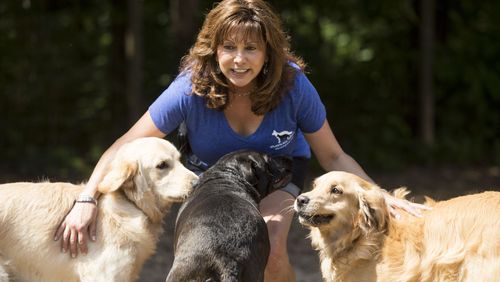The mauling of a Delta Air Lines passenger by an emotional support dog sitting next to him on a plane has raised questions about what could have been done to prevent it.
The federal Air Carrier Access Act requires airlines to accommodate emotional support animals, which are lumped into the broader category of service animals in the U.S. Department of Transportation's definition.
But emotional support animals are not recognized under the Americans with Disabilities Act, which allows people to bring service dogs into public places like restaurants and stores.
The legal difference between service dogs and emotional support dogs potentially exacerbates the issue of emotional support dogs in airplane cabins.
Emotional support dogs, unlike other trained service dogs, aren’t necessarily accustomed to accompanying their owners to busy places filled with strangers like restaurants and stores.
Because emotional support dogs don’t have the same public access rights, “they’re not accustomed to going into public, they’re not trained for it,” said Brad Morris with Psychiatric Service Dog Partners, a nonprofit that advocates for service dog users, who sat on a DOT advisory committee on the issue last year.
While psychiatric service animals are trained for tasks like sensing when the owner will have an anxiety attack and taking action to lessen the effect, an emotional support animal can be a dog or cat whose mere presence is comforting.
“Think of the everyday life of a person who goes everywhere with their service dog, then think of the person who goes to work eight hours and then comes home, and then they have their emotional support animal,” Morris said. “If people understood what an emotional support dog was, then I don’t think they’d question whether it was a real one. I think they’d just question whether it should have been there [sitting in the airplane cabin] in the first place.”
To acclimate a dog to crowded conditions on a plane requires extensive training, according to Alpharetta dog trainer Susie Aga, who works with support dogs as well as regular pets . The training involves “slowly inducing stressful situations, doing a systematic desensitization of being in close proximity,” she said.
But some people use the emotional support category to get out of hefty fees charged by airlines for pet travel, and oppose restrictions on emotional support animals. Delta is among the airlines that charge $250 round trip for a pet to travel in the cabin, for example, and restrict the transport of pets as checked baggage.
“This is all about revenue to the airlines,” wrote Northbrook, Ill. resident James Haft in a public comment to the DOT. “The airlines complain about the huge increase in emotional support dogs, but they have brought this problem on themselves. If pets traveled free, or for nominal charge, then the only service animals flying would be those for the blind an otherwise truly needy.”
Association of Flight Attendants spokeswoman Taylor Garland said flight attendants “have seen an uptick anecdotally in emotional support animals being on board, and we definitely know that there is abuse in the system.”
“We want the DOT to create stricter guidelines or processes to better control the emotional support animal process so that it doesn’t put into jeopardy the entire program altogether for the people who really do need these animals to travel,” she said.
Crowded planes also make it more difficult to make last-minute seat change on board, according to Garland.
She said the Delta incident “has elevated the issue in the public sphere... about the real issue that these animals pose and the pressure to better address that -- for both the people who really need these emotional support animals and service animals, and also the other people on board, who when they bought a ticket assumed they’d be sitting next to a human being.”
To learn why the emotional support dog on a Delta flight was not required to be in a carrier or wear a muzzle, and what efforts are being made to change federal regulations on emotional support animals, read more on MyAJC.com.
About the Author







